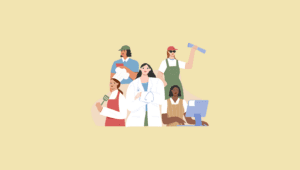Getting older just got a lot more fun. A new study shows taking up dancing in your golden years can be key to keeping you young and preventing you from falling.
According to the research published online Sept. 25 in JAMA Network Open, “Researchers found a 31% reduction in falls and a 37% reduction in fall risk for those aged 65 and older when reviewing clinical trials on “dance-based mind-motor activities” from around the world.
Dance-based mind-motor activities are those that have upright movements that emphasize balance and use music or an inner rhythm, such as breathing, according to the study. They include instructions or choreography, as well as social interaction. Tai chi meets those criteria, in addition to a variety of dance-based activities, including ballroom and folk dancing.
“We were positively surprised by the consistency of our results,” said study author Michèle Mattle, a movement scientist and doctoral candidate at the University of Zurich, in Switzerland.
“Although previous research in the field of falls prevention and exercise was suggesting that interventions, including multitasking activities, are promising falls-prevention strategies, it was unclear if dance-based mind-motor activities would lead to comparable results,” she said.
Though dance was often suggested as a good fall-prevention activity for older adults, there was not previously evidence for that, Mattle said. The review only found an association between dance and mobility, balance and lower body strength, not a cause-and-effect relationship. It also concluded there is a need for more high-quality trials on dance.
Falls are the leading cause of accidental death and injury in people over 65, said Dr. Allison Mays, a geriatrician and assistant professor of medicine at Cedars Sinai, in Southern California. Mays is involved in another study that looks at the impact of exercise classes on older adults.
Causes of falls can range from reaction time slowed by aging, vision changes that affect balance, blood pressure changes and medication, Mays said.
“Falls are not normal, even in older adults,” Mays said. “It always should deserve a conversation with your physician.” The number one change an older person can make to prevent falls is exercise, Mays said.
Mays suggested walking as an alternative exercise to dancing if seniors aren’t up to the task of making moves on the dance floor, a health claim many experts agree with.
In his new book, “In Praise of Walking, “ Shane O’Mara, a neuroscientist and professor of experimental brain research at Trinity College in Dublin, touts the health benefits of walking, especially for older adults.
His research explains, “walking helps protect and repair organs that have been subject to stresses and strains. It’s good for the gut, assisting the passage of food through the intestines. Regular walking also acts as a brake on the ageing of our brains, and can, in an important sense, reverse it.”
The key to keeping seniors on a consistent exercise schedule, and thus keeping them safe from falling, is making their exercise engaging.
“Not everyone wants to do a traditional exercise class, and so if you can get benefits from flamenco, then that’s wonderful. It provides more options, more evidence behind different activities that are going to benefit our patients,” Mays said. “I was very pleased to see that we’re building evidence around dance and other fun activities as a way to help older adults prevent falls.”







